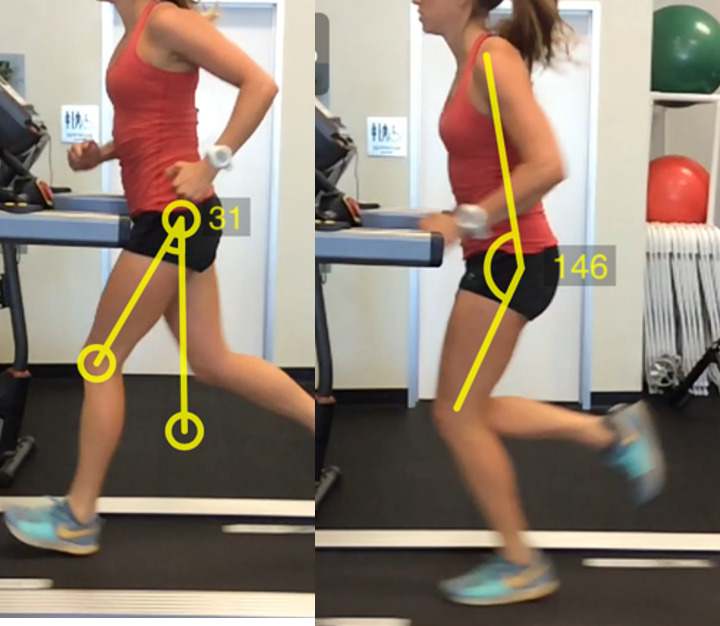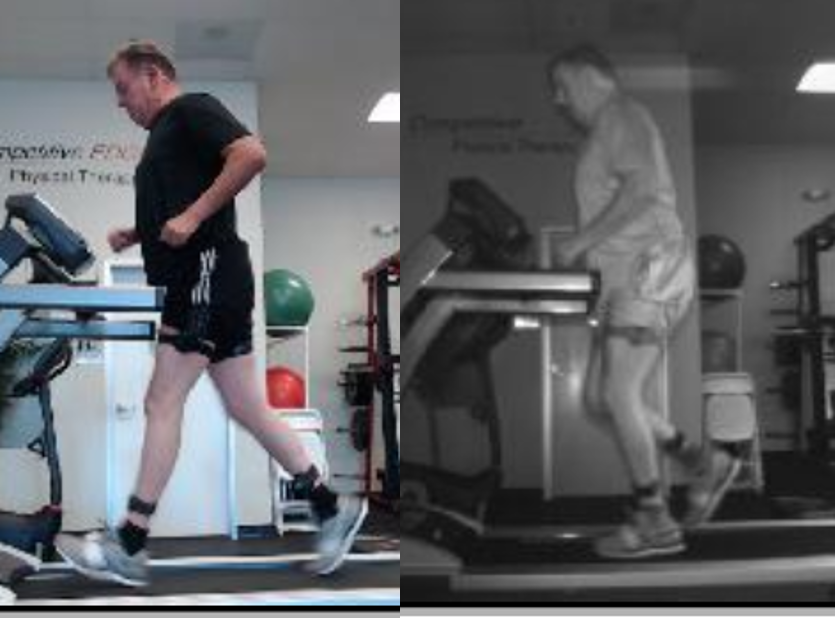
If you had an extra hour each week to devote to training, what would you do with it?
More miles? Cross training? Yoga?
For most runners, strength training would be the last choice to fill that void. Whether the objection comes from worries about getting slow or questions about the science, weight training is still debated in some running circles.
Should Runners Strength Train?
It’s an age old question, but the answer is simple: yes. Runners should absolutely strength train. It reduces injury, increases speed, and generally benefits performance — if done correctly.
The question has stuck around for so long because, quite frankly, most runners don’t like to strength train. There’s hope that the answer might change, or that there’s new research to keep you eternally out of the weight room and on your favorite trails instead.
Sadly, that’s not the case, and it isn’t likely to be the case any time soon. If you’re groaning a little (or a lot) inside, give us a minute or three to convince you that strength is truly to your benefit. We’ll give you the science, the benefits, and the how-to; all you’ll have to do is execute and reap the rewards.
Benefits of Strength Training for Runners
Let’s get to the point. Here’s everything you stand to gain by adding strength training into your routine:
- You’ll take longer to tire. One study found that athletes increased their time to exhaustion (at max speed) by a whopping 21 percent just by adding a squat program to their training.
- You’ll be less injury prone. Taking stress off of cartilage and bony structures and putting it into the muscles and tendons (where it belongs) will help protect your feet, legs, and back.
- You’ll run faster. Stronger, more explosive muscles translates to a quicker, more powerful transfer from foot to foot.
- You’ll have better neuromuscular efficiency. The relationship between your motor cortex and your muscles will be faster and better coordinated.
- You’ll develop increased running economy. You’ll use oxygen more efficiently at submaximal speeds.
That’s the short and sweet of it, but how does it actually happen? It’s not entirely logical that doing something as departed from running as lifting weights should make a difference, so let’s explore the science.
The Biomechanical Demands of Running
The easiest place to start is understanding the mechanics of running. In order to run a mile, you must take 1400-1600 steps. Remember, this isn’t a passive transfer like walking — you’re actively pushing your weight forward with each stride and expecting your other leg to catch that force. With each step, you’re absorbing 2-2.5 times your body weight as you propel yourself from foot to foot. For a person who weighs 150 pounds, that equates to 300 pounds of force in each step!

To effectively absorb that force, your legs need to be strong enough to protect the ligaments, cartilage, and other internal joint structures. By building the muscle up, you can “actively load” each step by bending through the trunk, hip, knee, and ankle and allowing the muscle and tendon to take on “elastic energy.” This allows you to take in the energy of your stride and recycle it into continued propulsion, thus improving your running economy.

In contrast, “passive loading” occurs when the foot reaches out beyond the knee and the body reacts with a “braking” action. If your gait relies on passive loading, you’re using more energy to cover the same distance by asking your muscles to regenerate energy after braking. Not only that, but the force puts excess stress on cartilage, bone, and ligament. These structures aren’t designed to absorb the amount of impact involved in running and can easily become irritated and injured.
More than 70 percent of runners will experience an injury in a given year, and more than 50 percent of those injuries affect the knee. These injuries primarily result from poor alignment, passive loading in running, and inadequate hip muscle activation (resulting in a quad- or calf-dominant stride).
The Science of Running and Strength Training
There’s a plethora of research supporting the physiological benefits of strength training for runners.
Let’s start with one of the key predictors of running performance — running economy. You probably know all about VO2 max and lactate thresholds, but this is a little different. Running economy measures how much energy you use when converting oxygen into forward movement at submaximal speeds.
Think of it like miles per gallon. At certain speeds, your car uses gas more efficiently. The same is true with you. Only, unlike your car, you can train your body to be more efficient. The better your running economy, the less oxygen you require to power your running because you’re utilizing it more effectively.
In high-performing endurance athletes, running economy has been shown to be a better performance indicator than VO2 max.
So what does strength training have to do with increasing oxygen efficiency? The research speaks for itself:
- When a group of runners added 4 sets of half squats to their training for 8 weeks, they experienced an increased time to exhaustion and an increase in running economy with no change in body weight or VO2 max.
- Another study tracked runners who added explosive jumping tasks for 9 weeks, and those runners saw an increase in running economy and improvements in 5k times for novice and elite runners alike.
- An evaluation of 97 runners found that biomechanics play a large role in oxygen consumption and energy usage.
- Several meta-analyses concluded that strength training significantly improves running economy without changing body composition.
The Biggest Objections to Strength Training
While it seems like a straight-forward sell (who doesn’t want to run faster and smarter?), there are still some key objections that beg a response.
Will Strength Training Make Me Bulky?
No. Weight training is not the same as body building. It takes a lot of work to “get big,” and it’s an entirely different kind of training. Body builders focus on increasing muscle fiber size (called hypertrophy) and utilize isolated, single-joint lifts to accomplish this. Strength training focuses on increasing the tensile strength of your muscles fibers through compound, multi-joint drills. Several academic reviews have shown that strength training does not change body composition or increase mass.
Will Strength Training Make Me Slow?
No; quite the opposite. As evidenced by the studies referenced above, speed and power training will actually make you faster and more efficient in your running.
What If I Don’t Have Time to Add Workouts?
This is discussed in greater detail below, but it won’t take much time (you can get results with as little as 20 minutes twice a week). It might feel like a big adjustment to update your routine and learn how to do the exercises properly, but isn’t that better than taking time off to rehab an injury?.
If running is truly what you enjoy, and what you want to continue to pursue, taking the time to prevent injury and shore up your biomechanics now will increase the lifespan of your running career. If you don’t have time to rehab a knee injury, then you must find time to strength train.
What If I Just Don’t Want To?
To be blunt, do you want to run? And keep running? Then you need to find a way to strength train to protect your body long term. Plus, you get all the awesome benefits of getting faster and stronger and seeing your running improve.
If your objection is to something more specific, like weight room culture or just being in a gym, there are ways around that. You can try gyms out (many offer free trial weeks) until you find one that you can tolerate. You can build a home gym or use resistance bands and medicine balls for the initial stages of training. You can also accomplish a lot with bodyweight training.
The Best Strength Training Methods for Runners
The goal in strength training for runners is to enhance metabolic effect for release of growth hormone while using running biomechanics. That’s a huge string of words. Basically, it means you want your body to release growth hormone while doing the same movements you do in running. This means that the “right” movements are getting stronger.
One of the ways you stimulate the release of growth hormone is by putting the body under enough exercise-induced stress. In order to get hormone to release and see strength grow, you need to activate your muscle at 60 percent or more, meaning that you need to be using 60 percent of your muscle fibers with each contraction.
What does this translate to? Compound movements under weight, explosive plyometrics, and a focus on the eccentric component of lifts.
What Types of Strength Exercises Should Runners Do?
Before beginning any lifting sessions, you want to go through a warm up to get the body moving, and a series of drills to activate the glutes. The gluteal muscles are commonly neglected with runners, resulted in a quad dominant stride that can lead to knee pain and injury.
To ensure that you’re utilizing the glutes during your strength training (so that you train your muscles to fire during running actions), you’ll need to “wake them up” before you start working. Using a resistance band around your upper legs, perform lateral walks and monster walks — it’s key to maintain hip hinge and concentrate on utilizing the glutes during the motion.
Once you’re warmed up and ready to go, work through these exercises:
- Back squat
- Deadlift
- Lunge
- Single Leg Romanian Deadlift
- Bulgarian Split Squat
When performing these lifts, focus on slow, steady, controlled movements. You should be lifting 85-95 percent of you one-rep max. If you don’t know what your max is, you can estimate it by doing high-weight reps to failure and plugging the data into an online calculator.
The other side of strength training is plyometrics, commonly referred to as “plyos.” These are fast, explosive movements that frequently incorporate jumping elements. Plyos require you to exert maximum force over a short period of time. When performed correctly, they increase power (and will thus build driving strength in your running stride).
Plyometrics can get complicated quickly, but great ones to start with for running are:
- Box jumps
- Single leg box jumps
- Depth jumps
There are endless variations of these activities, and as you get more comfortable and proficient with the ones listed here, a running specialist can build a personalized training program to close any gaps you may have and introduce exercise variation.
How Often Should Runners Strength Train?
The good news is, you only need two days a week in order to see the benefits. During each session, perform 2 sets of each exercise with 4-6 repetitions per set. Rest 30 seconds to 1 minute in between sets.
Your strength workouts can be performed on any normal workout or run day — though you probably don’t want to combine weight training and long run days. Generally speaking, it’s a little easier to run before you lift, rather than the other way around. However, there isn’t significant research to demonstrate that one order is more beneficial than another.
During race weeks, refrain from weight training for the 48 hours before the race. Just as your running workouts taper, so should your strength training.
Get To It!
There you have it. All the science, mechanics, and how-to you need for strength training to complement your running career. It may seem daunting, but once it’s habit, you’ll hardly notice the extra work each week. What you will notice are the various improvements in your running economy.
